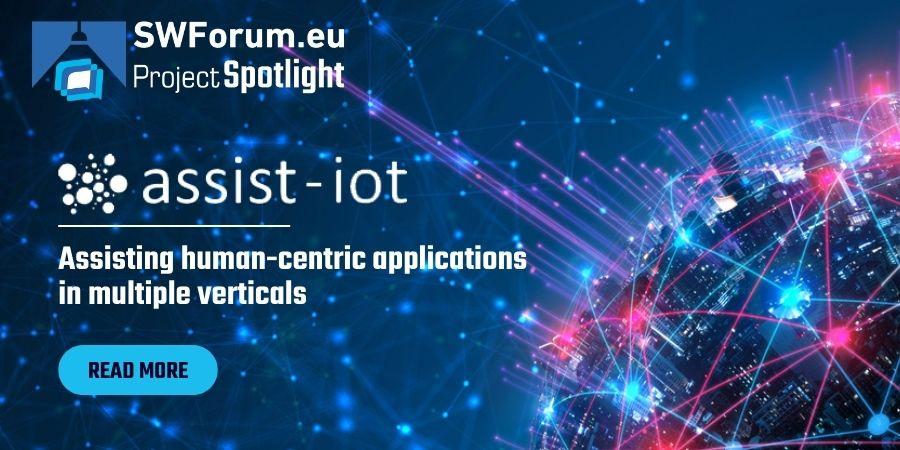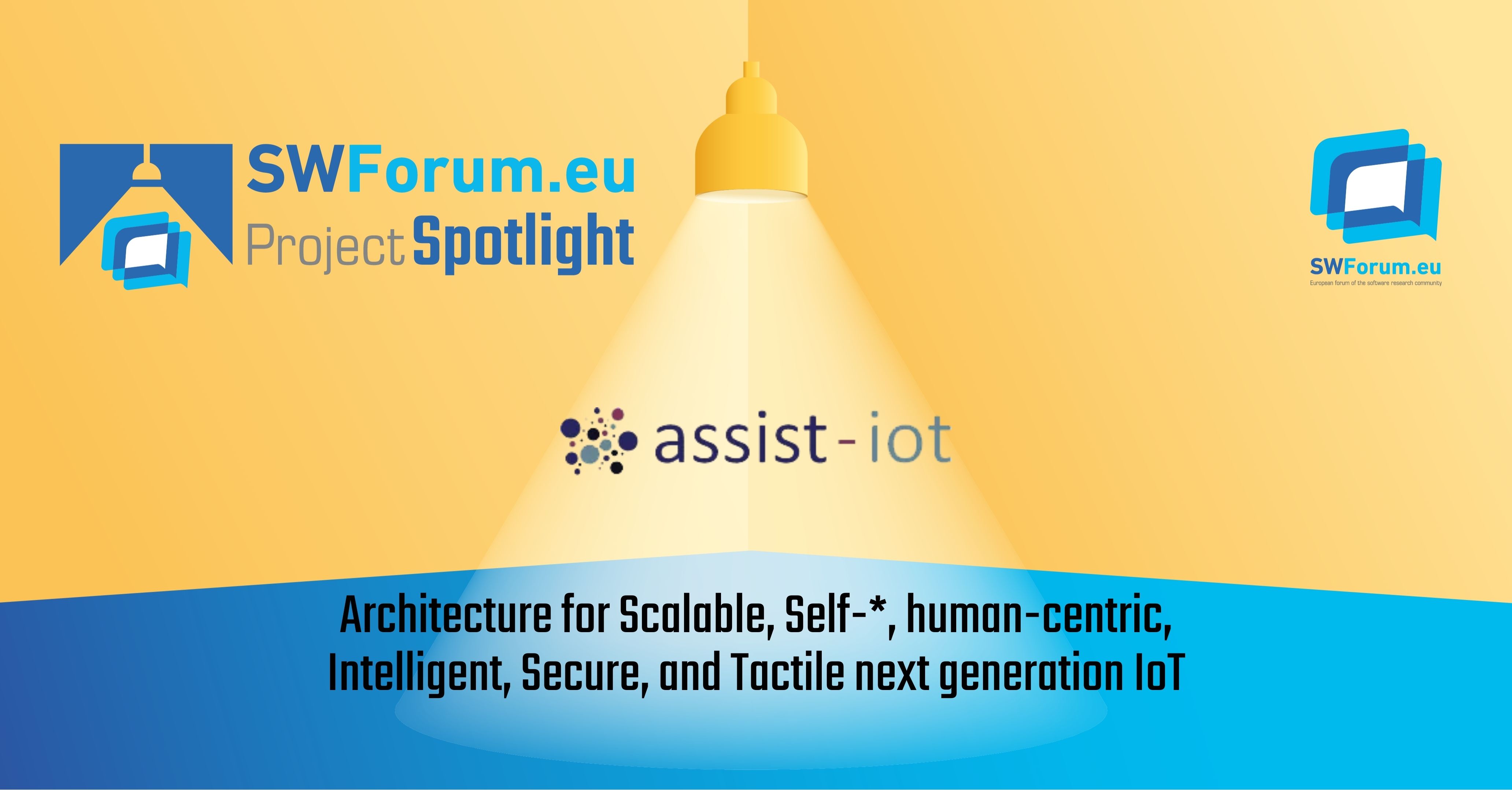ASSIST-IoT: Assisting human-centric applications in multiple verticals

Existing applications do not benefit from opportunities of multiple data sources/streams. Moreover, traditional centralised IoT architectures store and process long-term data but lack the capabilities needed to handle new requirements such as (i) Growth of volume of unstructured data, (ii) Increasing need for a near-real-time reaction, and (iii) Difficulty in avoiding the “silo effect”.
ASSIST-IoT aims at the design, implementation and validation of an open, decentralised reference architecture, associated enablers, services and tools, to assist human-centric applications in multiple verticals. To do so, ASSIST-IoT will be tested in highly heterogeneous environments to ensure minimization of the risk, by working with leading industries in different vertical markets with diverse needs such as: (i) improving efficiency, safety and profitability of new port processes, (ii) making provisions for predicting potentially dangerous situations in construction, and (iii) increasing monitoring capabilities in individual cars and at fleet scale.
ASSIST-IoT commits to making most datasets publicly available (scientific articles, deliverables, software assets) in open repositories (such as official project website www.assist-iot.eu, ASSIST-IoT Zenodo or Researchgate) with a Document Object Identifier (DOI) and following open licensing correspondingly (a type of Open-Source Software License, Apache 2.0, GNU GPL or others, that enables distributing of the results to the community). Enablers are the cornerstone of the ASSIST-IoT architecture. The introduction of the “enablers abstraction” responds to the realisation of a modular architecture, facilitating the delivery not only of the functions promised by ASSIST-IoT, but also the addition of future capabilities. The enablers will consequently be developed while keeping in mind this open-source commitment. For instance, some of them rely on other open-source solutions such as PostgreSQL, Elastic stack, VerneMQ, Tensorflow, or Konga. Furthermore, the smart orchestrator enabler, which is the core enabler of ASSIST-IoT, follows the ETSI OSM principles. The Multilink enabler will be fully compatible with the OpenWRT framework.
ASSIST-IoT results: supporting the future Horizon Europe and Digital Europe Programmes
ASSIST-IoT will demonstrate how European industry can benefit from the decentralised AI-infused control/actuation reference architecture (e.g. intelligent services and digital enablers, distributed context-awareness across the ecosystem, data interoperability, AI, smart networking, and DLT-based security, privacy and trust), and build competitive advantages (e.g. reduced time to decisions, made near the edge; cost and time effective secure/trustable data sharing and control; semi-autonomous actions; agile operations; sustainable human-centric processes; or DLT for data provenance/interoperability).
Innovation statement from the Technical/Coordination Board
Starting up a commercially successful (technology) product from scratch is tremendously complex and difficult. For every commercial success, there are countless companies that are forced to close because their projects have not been as profitable as originally estimated. Traditional R&D Projects try to quantify and measure social impact as an academic exercise of assessment separate from business operations (i.e., things like product/market fit, customer development or sales funnels, to name only a few, are outside of their scope and plans).
ASSIST-IoT aims at addressing several impacts for end-users that can be summarised in 3 Key Impact Pathways: Generate innovation-based growth; create more and better jobs; leverage investments in R&D. These impacts will be achieved through the ASSIST-IoT innovation pathway and strategy. As per the ASSIST-IoT innovation pathway, ASSIST-IoT will address challenges by building the right thing (product or service) appealing to every kind of user, while in parallel, ensuring maintainability and sustainability beyond the project’s duration.
ASSIST-IoT takes advantage of the pros of both academic and industrial domains, with the strong foundational belief of working for innovations that are good for business (profit), good for the customers (customer value), and good for the wider system, solving social and environmental challenges. The objective of this project is not only to provide an innovative multi-plane (semi-)autonomous decentralised edge-cloud reference architecture, supplemented by cross-cutting digital enablers (especially in the context of Next Generation IoT), but also to dispel the notion of trade-offs between what seem to be competing goals: performance versus impact, profit versus purpose, and human well-being versus environmental protection.
Learn more about the ASSIST-IoT project and stay updated with the latest news and events.
The SWForum.eu is glad to feature the ASSIST-IoT project as our project spotlight from 1-5 August.
